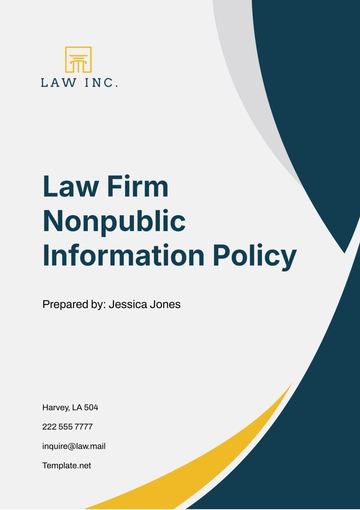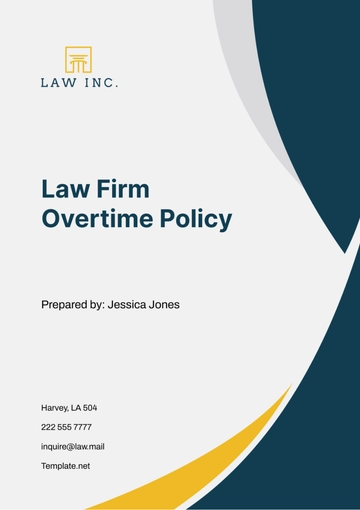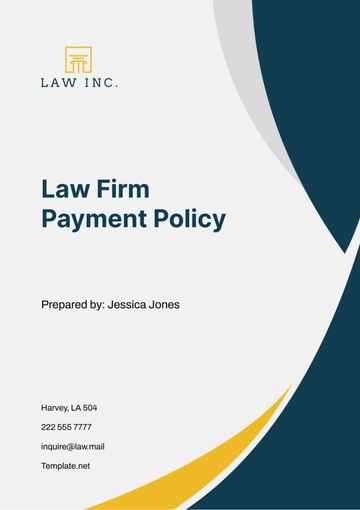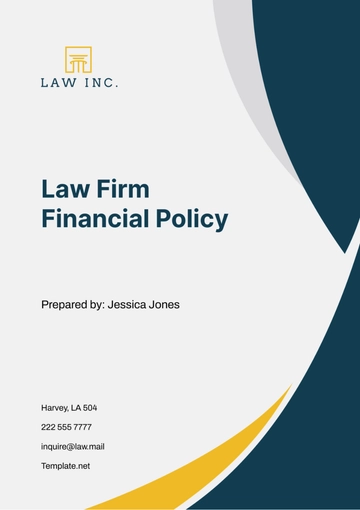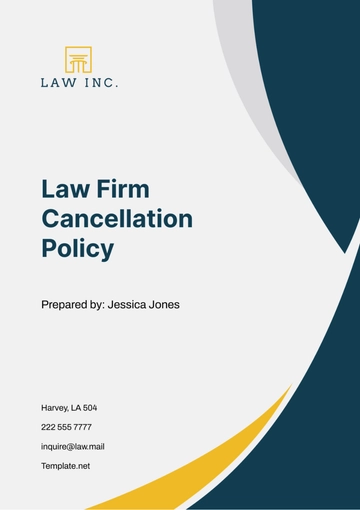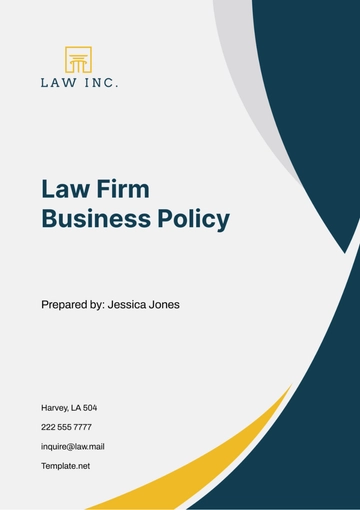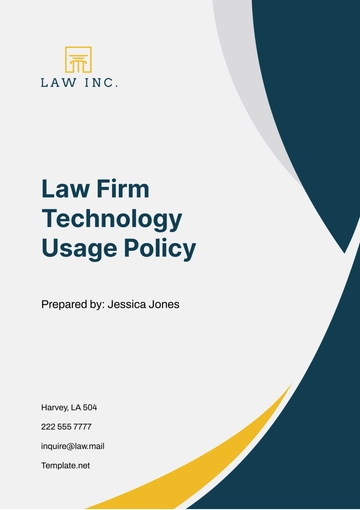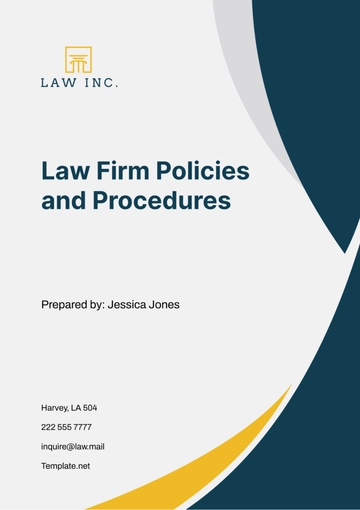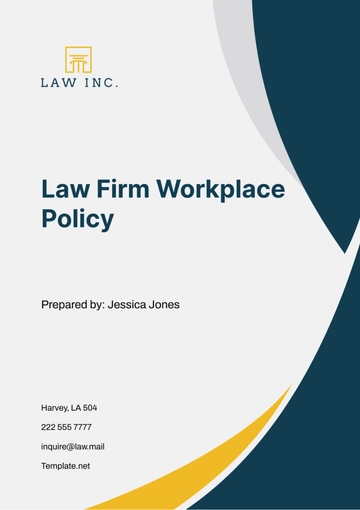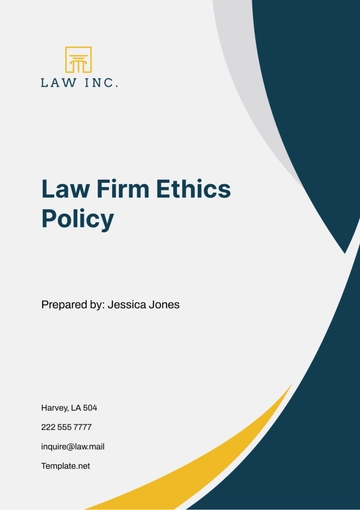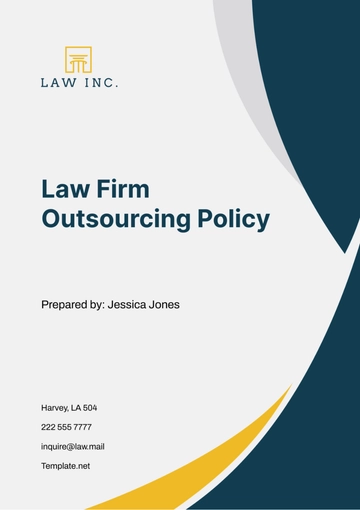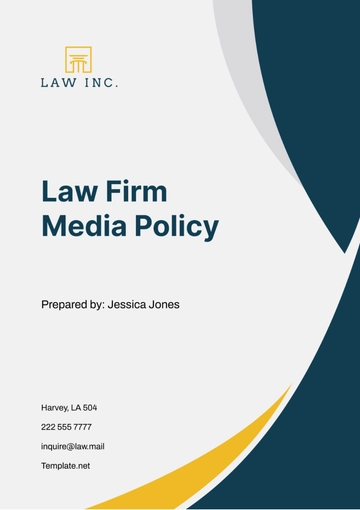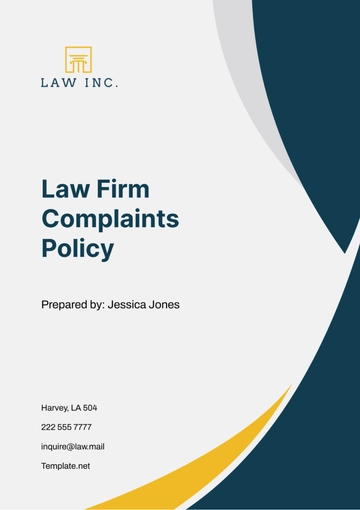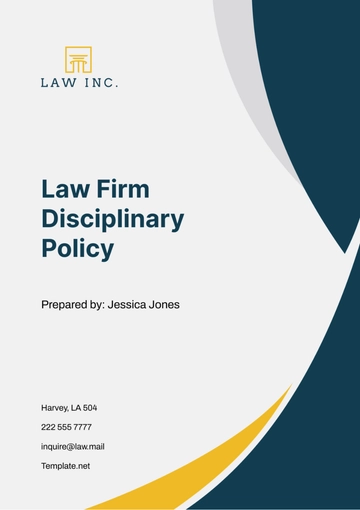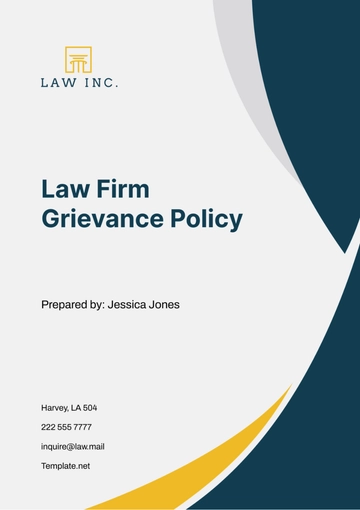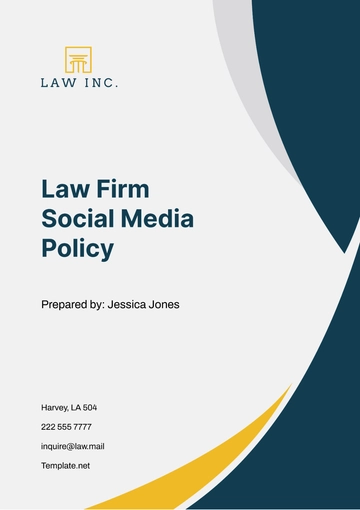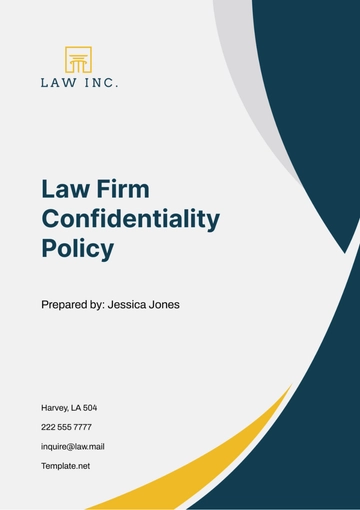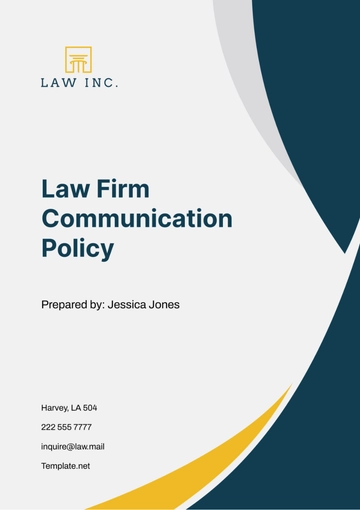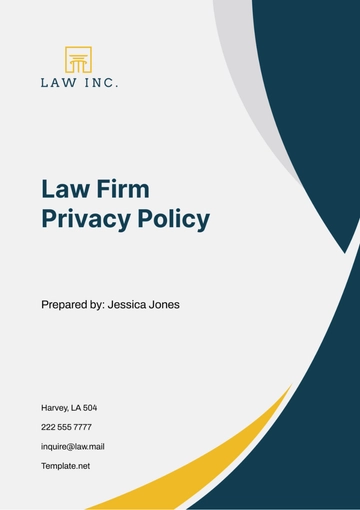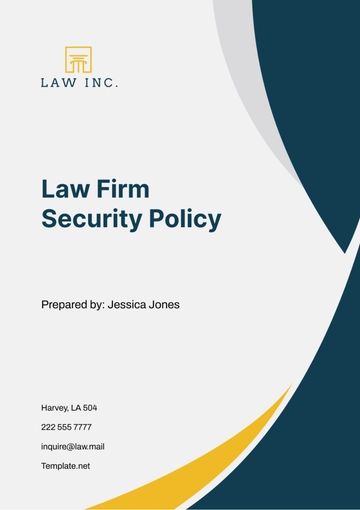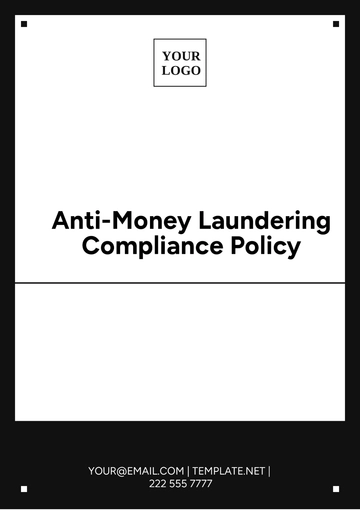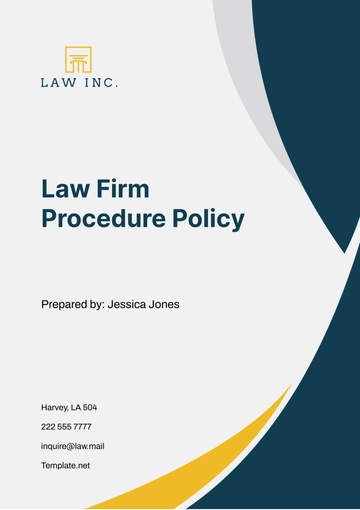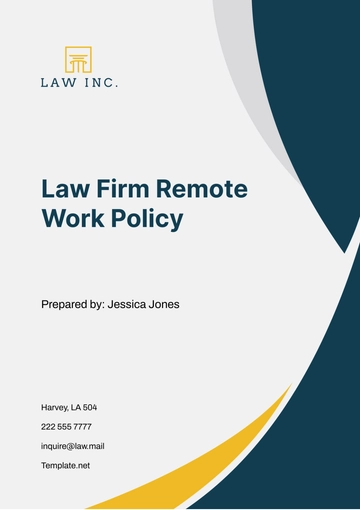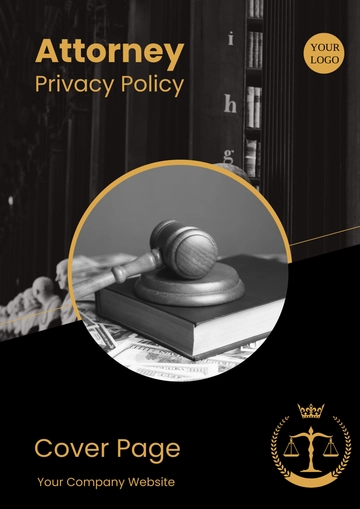Free Legal Employment & Labor Conflict of Interest Policy

I. Policy Statement
The Legal Employment & Labor Conflict of Interest Policy (“Policy”) is a crucial part of the ethical framework at [Your Company Name]. It sets the procedure for identifying, managing, and preventing conflicts of interest within our organization. This policy is designed to ensure that all employees, directors, and officers, regardless of their position or jurisdiction, act in the best interest of [Your Company Name] and uphold their fiduciary duties.
The Policy is effective from [Month Day, Year]. It is mandatory for all individuals associated with [Your Company Name] to adhere to this policy. The purpose of this policy is to provide clear guidance on what constitutes a conflict of interest and how to avoid or manage such conflicts. By doing so, we aim to maintain the highest standards of ethical conduct and integrity in our operations.
II. Policy Overview
A. Aim of the Policy
The primary aim of this Policy is to ensure that our employees and directors make decisions in the best interest of [Your Company Name] and uphold their fiduciary duties. This involves avoiding situations where personal interests could potentially conflict with the interests of [Your Company Name].
The policy is also designed to guide individuals in identifying and managing actual, potential, or perceived conflicts of interest. This is crucial in maintaining transparency and trust with our stakeholders.
Furthermore, the policy aims to provide a framework for disclosing and managing unavoidable conflicts of interest. This ensures that such conflicts are handled in a manner that upholds the integrity and reputation of [Your Company Name].
B. Scope of the Policy
This policy applies to all situations where a conflict of interest may arise in the course of employment or service with [Your Company Name]. This includes conflicts that may arise in relation to personal relationships, financial transactions, and outside activities.
The policy covers not only actual conflicts of interest but also situations that may give rise to a potential or perceived conflict of interest. This is because perceived conflicts can damage the reputation of [Your Company Name] as much as actual conflicts.
The policy also provides guidance on what individuals should do if they find themselves in a situation that may constitute a conflict of interest. This includes procedures for disclosing the conflict and steps for managing the conflict.
C. Importance of the Policy
A conflict of interest can compromise the decision-making of individuals and can damage the reputation of [Your Company Name]. By identifying and managing conflicts of interest, we can ensure that our business decisions are made objectively and in the best interests of [Your Company Name].
This policy is also important for maintaining transparency and trust with our stakeholders. By clearly outlining what constitutes a conflict of interest and how such conflicts are managed, we demonstrate our commitment to ethical conduct.
Regular training and awareness sessions will be conducted to ensure everyone understands the policy and its importance. It is the responsibility of each individual to understand and adhere to the updated policy.
III. Responsibilities
A. Upholding Integrity and Accountability
In the pursuit of maintaining the highest standards of conduct, all employees and directors must adhere to the following principles:
Demonstrate integrity: This involves acting honestly and ethically in all business dealings. Upholding integrity means that each individual’s actions reflect the values of the company. It also means ensuring that personal behavior reflects well on the company and contributes to a positive workplace culture.
Demonstrate accountability: Accountability is about taking responsibility for one’s actions and decisions. It involves acknowledging when mistakes occur, learning from them, and taking steps to correct them. It also means being answerable for the outcomes of the decisions made in the course of one’s duties.
Demonstrate responsible stewardship: This principle is about managing the resources of the company in a responsible and ethical manner. Responsible stewardship means using company resources wisely and not for personal gain. It also involves making decisions that are in the best interest of the company.
B. Full Disclosure of Conflicts
The company expects all employees and directors to be transparent about any potential conflicts of interest. This includes:
Making a full disclosure of any activities or relationships that may constitute a conflict of interest: This involves informing the appropriate person or body within the company when a conflict arises. The disclosure should be made as soon as the individual becomes aware of the conflict.
Providing details of the conflict: The individual should provide sufficient details about the conflict to enable the company to make an informed decision about how to manage it. This could include details about the nature of the conflict, the parties involved, and any financial or other benefits that may arise from the conflict.
Updating the disclosure as necessary: If the circumstances of the conflict change, the individual should provide an updated disclosure. This ensures that the company has the most current information about the conflict.
C. Seeking Advice When in Doubt
When there is uncertainty about whether a situation constitutes a conflict of interest, all employees and directors should:
Seek advice: If an individual is unsure whether a situation constitutes a conflict of interest, they should seek advice from their manager or the legal department. This helps to ensure that potential conflicts are identified early and managed appropriately.
Follow the advice given: Once advice has been sought, the individual should follow the advice given. If the advice is to disclose the conflict, the individual should do so promptly.
Keep a record of the advice: The individual should keep a record of any advice received. This could be useful if there are any questions or disputes about the conflict in the future.
IV. Determination of Conflict of Interest
The process of determining whether a conflict of interest exists is a critical aspect of managing conflicts. It involves recognizing situations that may give rise to a conflict and assessing the potential impact on the company and its stakeholders. The following table outlines some common situations that may constitute a conflict of interest:
Situation | Description |
|---|---|
Outside Employment | Engaging in employment or services that negatively affect their capability to fulfill their roles to the company. |
Personal Interest in a Transaction | Possessing an interest in a transaction where the company is also an interested party. |
Receiving Personal Benefits | Receiving personal benefits from a customer, supplier, or service provider of the company. |
Now, let’s delve deeper into each of these situations:
A. Outside Employment
Impact on Role Fulfillment: If an employee or director engages in outside employment or services that demand a significant amount of time and energy, it could lead to fatigue or distraction that affects performance at the company. This could compromise the quality of their work and their commitment to their responsibilities within the company.
Competing Interests: A conflict of interest may also arise if the outside employment involves a competitor, supplier, or customer of the company. In such cases, the individual may find themselves torn between the interests of the company and those of the outside employer. This could potentially influence their decision-making and actions within the company.
B. Personal Interest in a Transaction
Financial Interest: For instance, if an individual owns shares in a business that the company is considering for a contract, they may be inclined to make decisions that favor that business, even if it’s not in the best interest of the company.
Influence on Decision Making: The conflict arises when the individual’s personal interest could influence, or appear to influence, their decision-making at the company. This could undermine trust in the company’s decisions and damage its reputation.
C. Receiving Personal Benefits
Gifts and Hospitality: Accepting gifts or hospitality from a customer, supplier, or service provider can create a conflict of interest if it influences, or appears to influence, the recipient’s professional judgment or actions.
Perception of Bias: Even if the individual does not allow the personal benefit to influence their decisions, the mere perception of bias could damage the company’s reputation. Therefore, it is important to disclose and manage such situations appropriately.
Understanding and identifying potential conflicts of interest is crucial for maintaining the integrity of the company’s decision-making processes and its reputation. By being aware of these situations, employees and directors can take steps to avoid conflicts of interest or manage them appropriately when they do arise. This helps to ensure that decisions are made in the best interests of the company and its stakeholders, thereby upholding the company’s values of integrity, transparency, and accountability.
V. Unavoidable Conflicts of Interest
In some instances, conflicts of interest may be unavoidable. These situations require careful management to ensure that the interests of all parties, including the company, are protected. The following guidelines provide a framework for handling such conflicts:
A. Identification of Unavoidable Conflicts
Unavoidable conflicts of interest should be identified and disclosed promptly. This involves:
Prompt Identification: As soon as an individual becomes aware of a potential conflict of interest, it should be identified. This allows the company to take immediate steps to manage the conflict. This includes:
1.1. Regularly reviewing personal and professional relationships and activities for potential conflicts.
1.2. Being aware of situations that may give rise to conflicts, such as personal relationships with suppliers or customers, or outside employment that relates to the company’s business.
Full Disclosure: Once a conflict is identified, it should be fully disclosed to the company. This allows the company to assess the situation and determine the appropriate course of action. Full disclosure involves:
2.1. Providing a detailed description of the conflict, including the nature of the conflict, the parties involved, and any potential impact on the company.
2.2. Disclosing the conflict to the appropriate person or body within the company, such as a supervisor, the human resources department, or a designated ethics officer.
Record Keeping: The company should keep a record of all identified conflicts of interest and the steps taken to manage them. This provides a clear audit trail and can help demonstrate that the company has acted appropriately. Record keeping includes:
3.1. Documenting the nature of the conflict, the disclosure made, and any actions taken to manage the conflict.
3.2. Regularly updating these records to reflect any changes in the conflict or its management.
B. Management of Unavoidable Conflicts
When conflicts of interest are unavoidable, they should be managed in a way that upholds the integrity of the company and protects the interests of all affected parties. This involves:
Developing a Management Plan: The company should develop a plan for managing the conflict. This could involve measures such as additional oversight, segregation of duties, or disclosure of the conflict to affected parties. The management plan should be tailored to the specific conflict and should aim to minimize any potential negative impact on the company or its stakeholders.
Implementing the Management Plan: Once the plan has been developed, it should be implemented as soon as possible. This helps to ensure that the conflict does not adversely affect the company or its stakeholders. Implementation may involve actions such as reassigning duties, implementing additional checks and balances, or informing affected parties of the conflict.
Monitoring the Conflict: The company should monitor the conflict to ensure that the management plan is effective and to identify any changes in the conflict. Monitoring involves regular check-ins to assess the status of the conflict and the effectiveness of the management plan.
Reviewing the Management Plan: The management plan should be reviewed regularly to ensure it remains effective. If the conflict changes or the management plan is not effective, the plan should be revised. This ensures that the company’s approach to managing the conflict remains appropriate and effective.
C. Transparency in Handling Unavoidable Conflicts
Transparency is key in handling unavoidable conflicts of interest. This involves:
Communicating with Affected Parties: The company should communicate with any parties that may be affected by the conflict. This could include employees, customers, suppliers, or other stakeholders. Communication should be clear, timely, and appropriate to the situation.
Providing Regular Updates: The company should provide regular updates about the conflict and how it is being managed. This helps to maintain trust and confidence in the company’s handling of the situation.
Being Open to Feedback: The company should be open to feedback about how the conflict is being managed. This can help to identify any issues or concerns and to make improvements where necessary.
Maintaining Confidentiality: While transparency is important, the company should also ensure that it maintains the confidentiality of any sensitive information related to the conflict. This could include personal information or commercially sensitive information. Confidentiality measures may include secure storage of information, restricted access to information, and non-disclosure agreements.
VI. Violations of the Conflicts of Interest Policy
The company takes violations of the Conflict of Interest Policy seriously. It is important to understand that non-compliance with this policy can have serious consequences. The following table outlines some potential violations and their corresponding consequences:
Violation | Consequence |
|---|---|
Failure to disclose a conflict of interest | Disciplinary action, which may include a formal reprimand, a reduction in responsibilities, or termination of employment. |
Engaging in activities that constitute a conflict of interest without approval | The consequences may involve formal reprimand, a demotion, a reduction in salary, or in severe cases, termination of employment. |
Failure to comply with the management plan for a declared conflict of interest | The violation may result in a formal reprimand, a probationary period, a suspension, or termination. |
Violations of this policy not only harm the company and its stakeholders, but they also undermine the company’s values and reputation. Therefore, it is crucial that all employees and directors understand the policy and comply with its provisions. However, it is important to note that the actual consequences will depend on the nature and severity of the violation. The company will consider all relevant factors, including the individual’s role, the impact of the violation on the company and its stakeholders, and whether the violation was intentional or inadvertent.
By adhering to this policy, employees and directors can ensure that they act in the best interests of the company and its stakeholders. This, in turn, helps to build trust and confidence among the company’s stakeholders, which is essential for the company’s long-term success. This process of determination is not only a proactive measure to prevent potential conflicts but also a reactive tool to address conflicts that have already arisen. It serves as a guide for employees and directors to navigate complex situations and make ethical decisions that align with the company’s values and objectives.
VII. Policy Revision
A. Revision Rights
[Your Company Name] reserves the right to amend this Policy at any time. The company recognizes that as it grows and evolves, its policies must also adapt to reflect changes in the business environment, regulatory landscape, and company culture. Therefore, the company retains the authority to revise this Policy as needed to ensure its continued relevance and effectiveness.
B. Communication of Changes
Changes to the policy will be communicated to all concerned parties. This includes not only the employees and directors who are subject to the policy, but also other stakeholders who may be affected by it, such as business partners and clients. The company is committed to maintaining transparency and will ensure that all relevant parties are informed of any changes in a timely manner.
C. Implementation of Changes
Once a policy revision has been approved, the company will take steps to implement the changes. This may involve updating internal documents, modifying training programs, and adjusting management practices to align with the revised policy. The company will also provide support and guidance to help individuals understand and comply with the new policy requirements.
D. Ongoing Review
The company is committed to maintaining a robust and effective Conflict of Interest Policy. Therefore, the policy will be subject to ongoing review to ensure that it continues to meet its objectives. This review process will consider feedback from employees, directors, and other stakeholders, as well as lessons learned from the implementation of the policy. The goal of this ongoing review is to continuously improve the policy and ensure that it remains a useful tool for managing conflicts of interest within the company.
- 100% Customizable, free editor
- Access 1 Million+ Templates, photo’s & graphics
- Download or share as a template
- Click and replace photos, graphics, text, backgrounds
- Resize, crop, AI write & more
- Access advanced editor
Mitigate potential conflicts in your organization with Template.net’s Legal Employment & Labor Conflict of Interest Policy Template! This tool is editable and customizable with our AI Editor Tool, offering a comprehensive guideline to maintain transparency and integrity! Ensure that employees act in the best interest of the organization preventing any conflicts!
You may also like
- HR Policy
- Restaurant Policy
- Company Policy
- Accounting Policies and Procedures
- Website Policy
- Privacy Policy
- Safety Policy
- School Policy
- IT and Software Policy
- Law Firm Policy
- Construction Policy
- Interior Design Policy
- Travel Agency Policy
- Education Academic Policy
- Security Policy
- Real Estate Policy
- Expense Policy
- Software Policy
